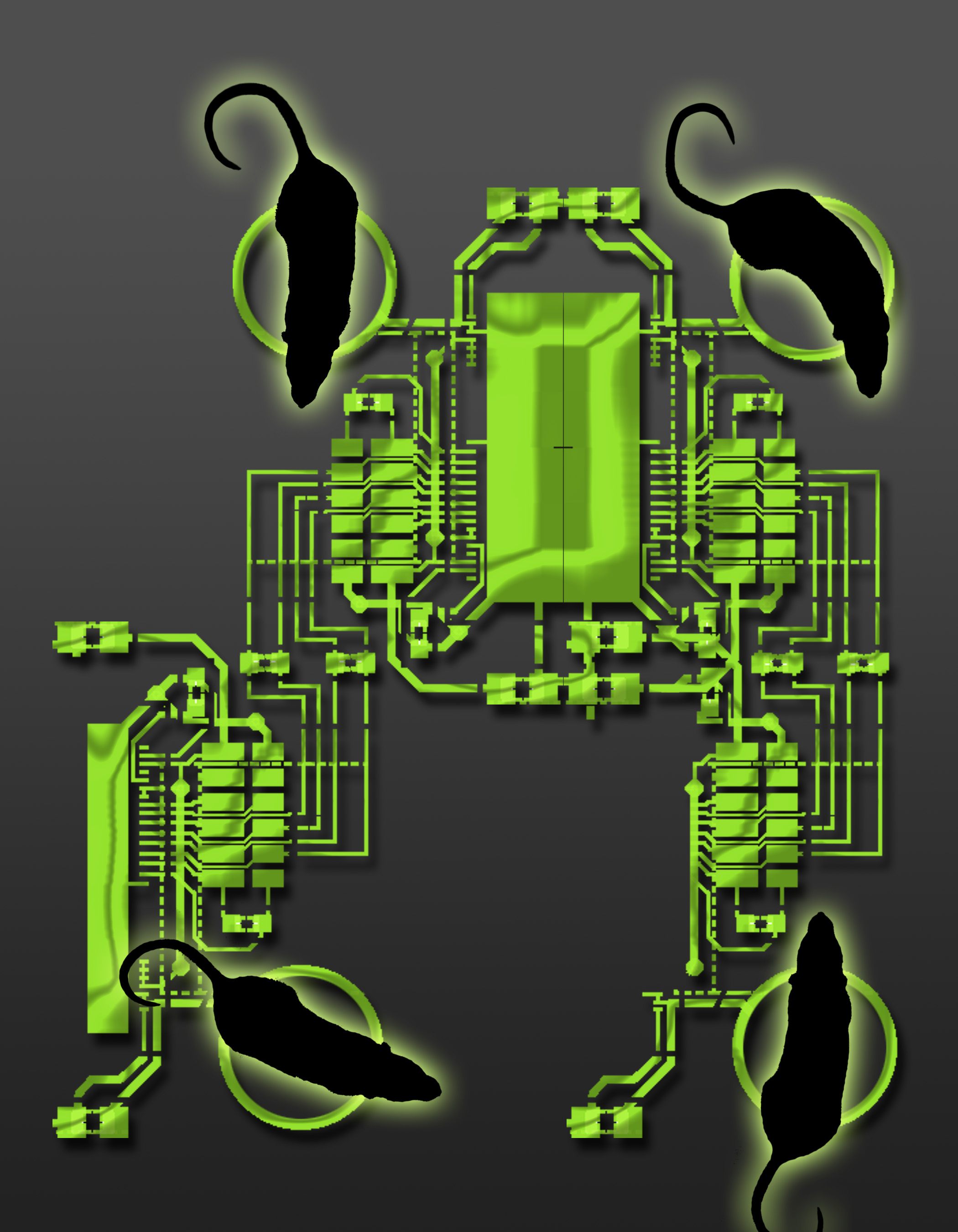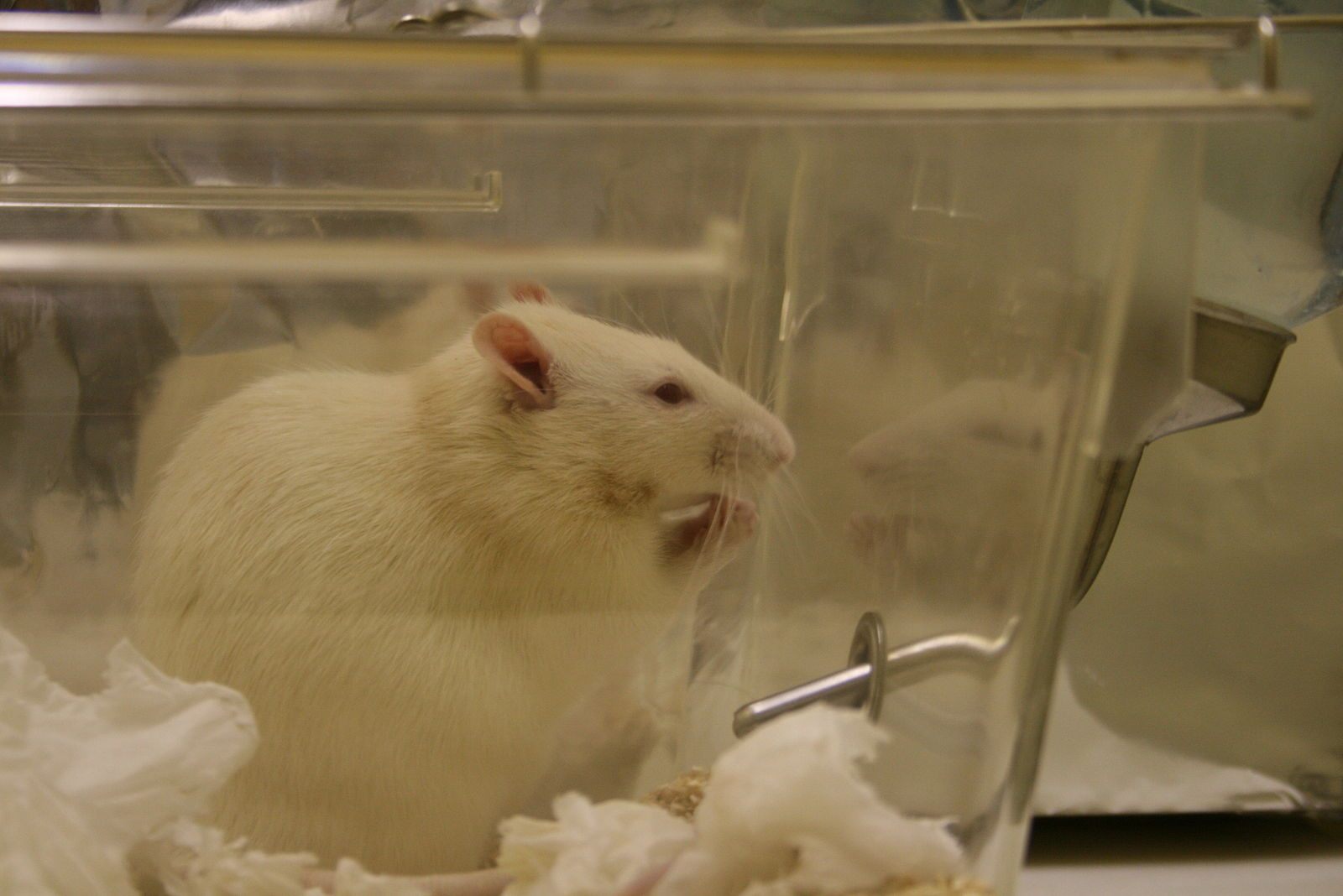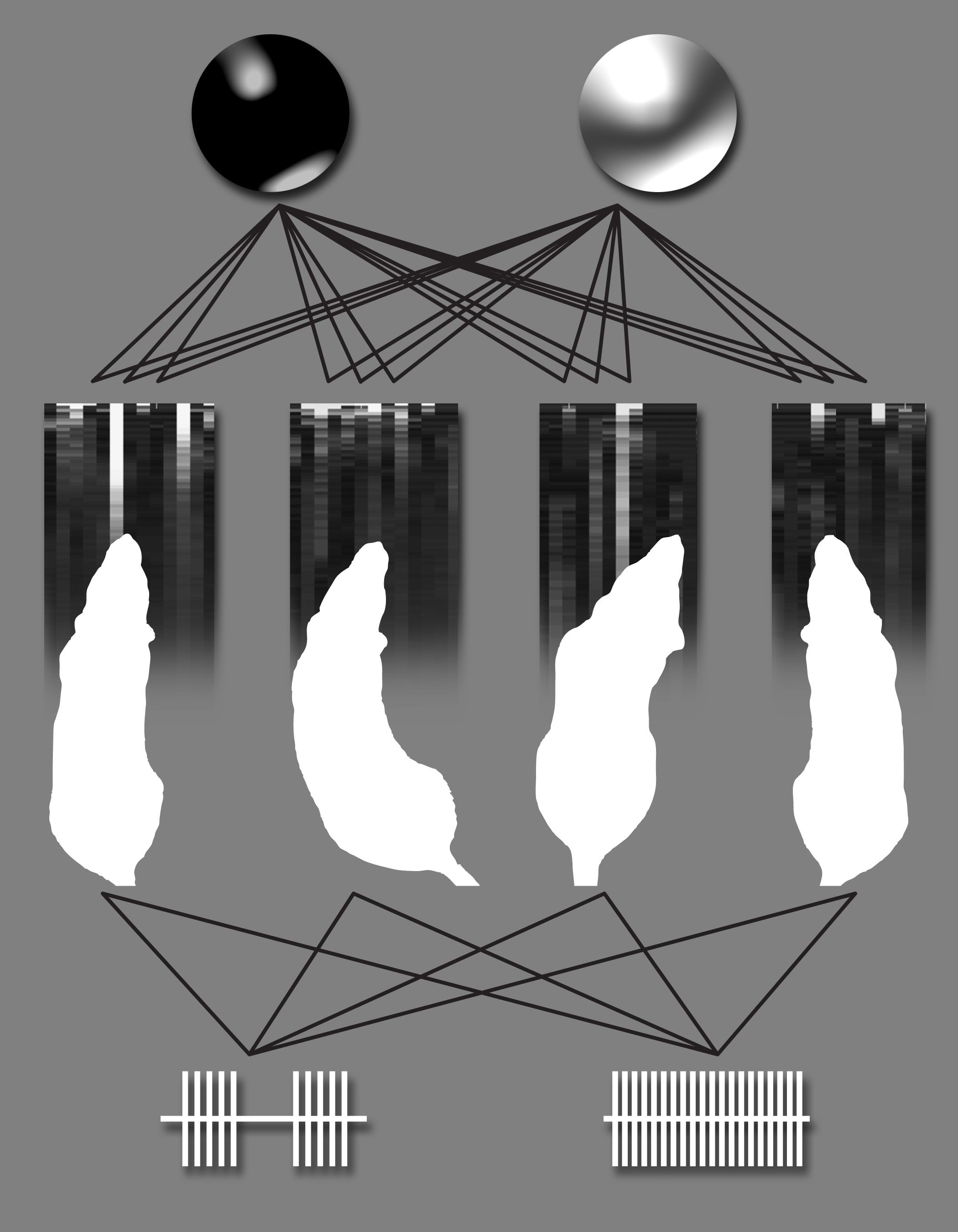This Is What Happens When You Link Up Four Rat Brains

The many connections of a rat Brainet. (Image: Katie Zhuang/Nicolelis Lab, Duke)
You may remember Pinky and the Brain, the classic 1990s Steven Spielberg TV show about two laboratory mice whose “genes have been spliced,” turning them into hyper-intelligent schemers who spend every episode trying to take over the world.
It seems we’ve learned nothing from cartoons. Neuroscientists at Duke University reported this morning that they have linked the brains of not just two, but three and even four rats. The paper, published in Scientific Reports and titled “Building an organic computing device with multiple interconnected brains,” describes how the technology enables the rodents to work together to “complete simple computational tasks involving pattern recognition, storage and retrieval of sensory information, and even weather forecasting.”
As if that weren’t enough, they also published a second paper, “Computing arm movements with a monkey Brainet,“ detailing similar experiments done with rhesus macaque monkeys.
 Boring, unconnected rhesus macaque monkeys. (Photo: Yann Forget/WikiCommons CC BY-SA 4.0)
Boring, unconnected rhesus macaque monkeys. (Photo: Yann Forget/WikiCommons CC BY-SA 4.0)
The researchers performed a series of experiments to test the animal superminds. In each case, they implanted electrical arrays in the creatures’ brains, linked the group up with wires, and trained them to synchronize their neural activity. In one challenge, thirsty rats were denied water until they matched their thoughts together.
In another, a group of three connected monkeys was tasked with controlling a computer-generated avatar projected on a screen. Each monkey was responsible for moving the avatar’s arm along a particular plane, with real monkeys having to work together to help the digital monkey hit the target. “As the animals gained more experience and training in the motor task,” the authors write, “researchers found that they adapted to the challenge.”
In a third experiment, rats were given different temperature and pressure readings associated with “early evening spring thunderstorms in North Carolina.” By combining their data through the neural network, the rats outputted information that the researchers could then translate into weather predictions with, they write, “accuracy which was much higher than chance.”
These rats and monkeys are living examples of what Nicolelis and his team call “Brainets” — animal brains linked together by electrode arrays, smarter together than they ever were apart.
 A figure from the paper, showing how real monkeys worked together to control a digital monkey. (Image: Miguel A.L. Nicolelis/Scientific Reports)
A figure from the paper, showing how real monkeys worked together to control a digital monkey. (Image: Miguel A.L. Nicolelis/Scientific Reports)
“Nicolelis has already a respected track record of turning what used to be thought of as science fiction fantasies into serious applied science,” Dr. Ron Frostig, a neuroscientist at University of California, Irvine who was not involved with the study, wrote in an email. “While the results of these pioneering experiments are not perfect, they serve as an harbinger for an exciting new direction in neuroscience.”
The Brainet dream first took hold in 2013, when the group connected two rat brains. In the accompanying paper, also published in Scientific Reports, they describe an experiment in which they showed one rat how to feed itself by pressing one of two levers, and connected that rat’s brain to the brain of a different, untutored rat faced with the same setup. The first rat then “taught” the second rat how to get food, via thought transmission.When rat #2 made a mistake, the rats were able to telepathically clear up the confusion.
At the time, Nicolelis called this one more step toward “an organic computer,” able to solve problems without being given explicit instructions. “In theory, you could imagine that a combination of brains could provide solutions that individual brains cannot achieve by themselves,” he said.

A lonely lab rat. (Photo: Jean-Etienne Poirrier/Flickr CC BY-SA 2.0)
Dr. Nicolelis and his team are also using this research to improve their brain-machine interfaces, which let living things command artificial devices using only brain signals. These form the core of the Walk Again project, an international collaboration led by Dr. Nicolelis that seeks to help movement-impaired patients regain some of their physical autonomy.
The project most recently turned heads with their “mind-control exoskeleton,” a robot suit that allowed Juliano Pinto, a paraplegic, to perform the kickoff at last year’s Football World Cup.
When asked what inspired the experiments, Dr. Nicolelis didn’t hesitate: “Curiosity,” he said.
Cats, you’re officially on notice.
 Illustration of a rat Brainet at work. (Image: Katie Zhuang/Nicolelis Lab, Duke)
Illustration of a rat Brainet at work. (Image: Katie Zhuang/Nicolelis Lab, Duke)

















Follow us on Twitter to get the latest on the world's hidden wonders.
Like us on Facebook to get the latest on the world's hidden wonders.
Follow us on Twitter Like us on Facebook